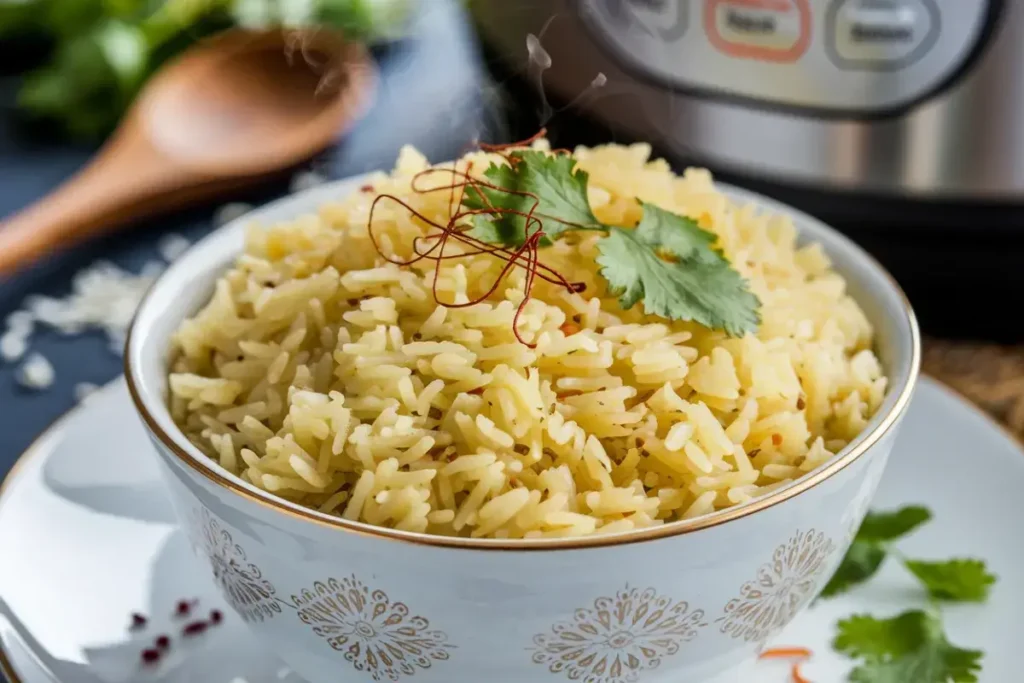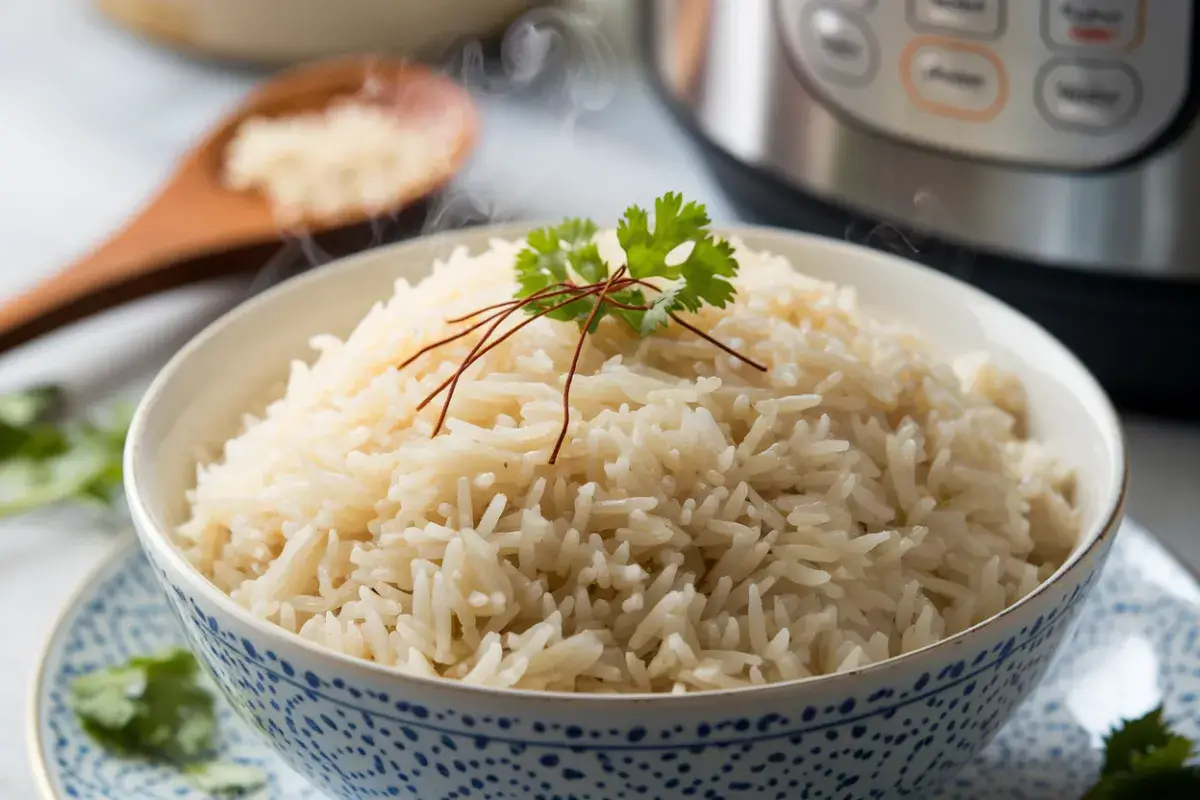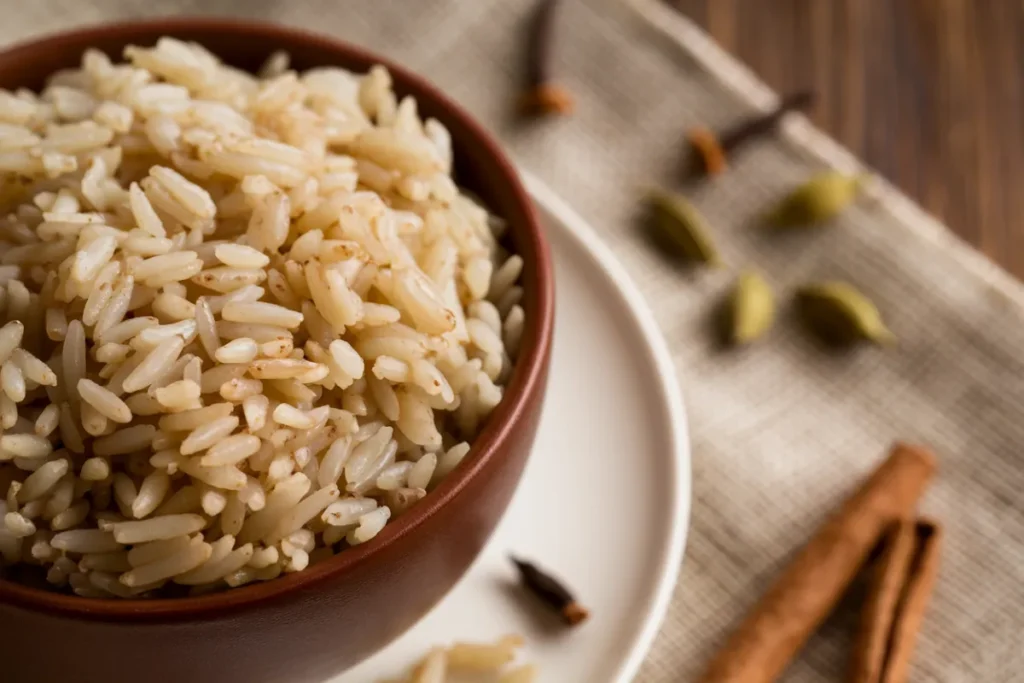Basmati rice is known for its delicate flavor and long, fluffy grains. However, many people find cooking it perfectly challenging, often resulting in mushy or undercooked rice. The good news? The Instant Pot makes the entire process quick, simple, and nearly foolproof. This guide will teach you everything you need to know about cooking Basmati rice in an Instant Pot—from achieving the ideal rice texture to preventing common cooking mistakes.
What is Basmati Rice?
Basmati rice is a unique, aromatic rice variety that originates from the Indian subcontinent. Its grains are long and slender, and they expand even further when cooked, creating a fluffy texture that complements a variety of dishes. One of its most distinctive features is its aroma, often described as nutty or floral.
Basmati rice is highly valued not just for its flavor but also for its nutritional benefits. It is naturally low in fat, cholesterol-free, and a great source of complex carbohydrates. With a lower glycemic index than other types of rice, Basmati is an excellent option for those looking to manage blood sugar levels. Plus, it’s packed with essential vitamins and minerals, such as thiamine and folate, which play key roles in energy metabolism and maintaining a healthy nervous system. Curious about the full range of health benefits? Learn more in this detailed guide on Basmati rice’s health benefits.
Why Use an Instant Pot for Cooking Basmati Rice?
Cooking Basmati rice can be tricky on the stovetop due to the delicate nature of the grains. The Instant Pot, however, offers a precise and foolproof method that takes much of the guesswork out of the process. Here’s why an Instant Pot is perfect for cooking Basmati rice:
1. Quick and Efficient
The Instant Pot dramatically reduces the cooking time compared to traditional methods. Instead of waiting around for 20–25 minutes for the rice to simmer on the stove, you can have perfectly cooked Basmati rice in as little as 6–8 minutes under pressure.
2. Consistent Results
With the Instant Pot, you no longer have to worry about undercooked or mushy rice. The controlled pressure cooking ensures the rice is cooked evenly, giving you fluffy, separate grains every single time.
3. Hands-Free Cooking
Once the rice and water are in the pot, the Instant Pot does all the work for you. There’s no need to hover over the stove or constantly adjust the heat. Simply set the timer, walk away, and let the Instant Pot handle the rest.
Key Features of the Instant Pot for Cooking Basmati Rice

The Instant Pot offers several features that make it ideal for cooking rice, especially Basmati. Here’s what makes it stand out:
- Pressure Cooking: The high-pressure setting drastically shortens the cooking time while ensuring that each grain of rice is evenly cooked.
- Rice Function: Most Instant Pots come equipped with a rice-specific setting that automatically adjusts the cooking time and pressure, making it nearly impossible to mess up your rice.
- Precise Temperature Control: The Instant Pot maintains an even temperature throughout the cooking process, ensuring your rice doesn’t boil over or scorch at the bottom.
- Natural Pressure Release (NPR): Allowing the pot to release pressure naturally after cooking ensures that your rice finishes cooking in its own steam, resulting in tender, perfectly separated grains.
Step-by-Step Guide: How to Cook Basmati Rice in an Instant Pot
Cooking Basmati rice in the Instant Pot is incredibly simple, but each step is important for achieving the best results. Here’s a detailed guide:
Step 1: Rinse the Rice
Before cooking, thoroughly rinse your Basmati rice under cold water. This removes excess starch, which can make the rice sticky. Rinse until the water runs clear—this step is crucial to getting those long, fluffy grains.
Step 2: Measure the Water-to-Rice Ratio
For the best results, use a 1:1 or 1:1.25 water-to-rice ratio. This means for every cup of Basmati rice, add between 1 and 1.25 cups of water, depending on how firm or soft you like your rice. Some prefer to add a little more water for a softer texture, while others prefer less for a firmer bite.
Step 3: Add Oil or Butter (Optional)
If you want to add richness and help the grains stay separated, add a teaspoon of oil or butter. This step isn’t required, but it enhances the texture and flavor of the rice.
Step 4: Set the Cooking Time and Pressure
Program your Instant Pot to high pressure and set the timer for 6–8 minutes. For firmer rice, set it for 6 minutes. For softer rice, 8 minutes is perfect. The Instant Pot will come to pressure before the actual cooking begins, but no extra time is needed once it starts.
Step 5: Allow Natural Pressure Release (NPR)
Once the timer goes off, allow the Instant Pot to release pressure naturally (NPR) for about 10 minutes. This step is important, as it lets the rice finish cooking without becoming mushy. After 10 minutes, you can manually release any remaining pressure by carefully turning the valve.
Step 6: Fluff the Rice and Serve
When the pressure is fully released, open the lid and gently fluff the rice with a fork. This helps the grains separate and prevents clumping. Now, your perfectly cooked Basmati rice is ready to serve!
Adjusting Water and Cooking Times for Different Results
Do you prefer softer, stickier rice? Or maybe firmer grains that hold their shape? Adjusting the water-to-rice ratio and cooking time in your Instant Pot allows you to tailor the rice to your personal taste. Here’s how:
- For softer rice: Use a 1:1.5 ratio of water to rice and set the Instant Pot to high pressure for 8 minutes. This will result in softer, more tender grains.
- For firmer rice: Stick to a 1:1 ratio and cook for just 6 minutes. This method produces firmer grains that are ideal for dishes like fried rice or rice salads.
With a little experimentation, you’ll be able to find the perfect balance that suits your texture preferences.
Common Mistakes to Avoid When Cooking Basmati Rice in an Instant Pot
While using an Instant Pot makes cooking rice a breeze, there are still a few common mistakes that can lead to less-than-perfect results. Here’s what to avoid:
- Too much or too little water: Improper water ratios can lead to either mushy rice or undercooked grains. Always measure carefully!
- Skipping the rinse: Not rinsing your rice will leave excess starch, causing the grains to stick together.
- Using quick pressure release: Quick pressure release can disrupt the cooking process, making your rice unevenly cooked. Always opt for natural pressure release (NPR) to ensure the best results.
By following these tips, you’ll be able to avoid the most common mistakes and achieve perfect rice every time.



